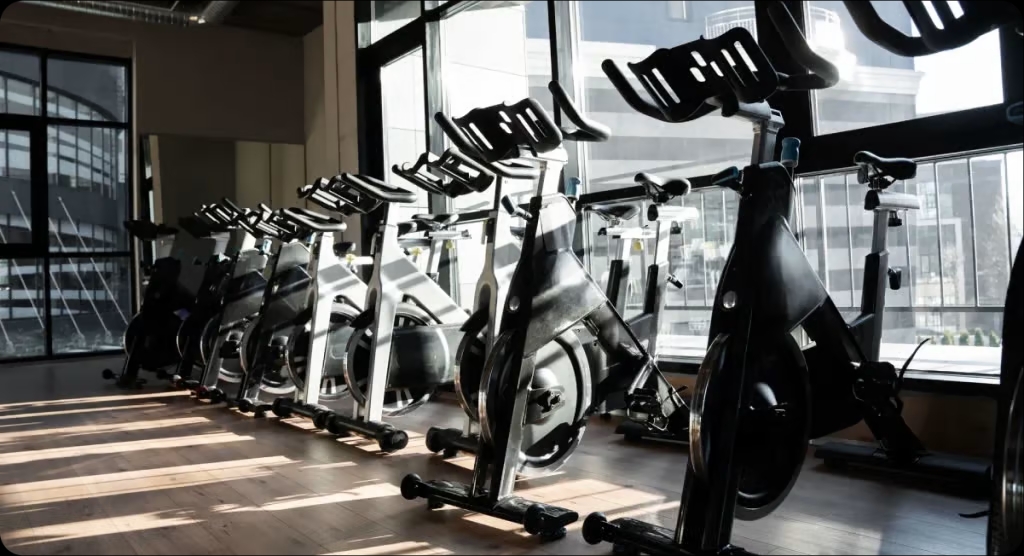Importance of SEO for Gym Owners

In today’s digital age, Importance having an online presence is crucial for any business, including gyms. Gym owners need to leverage search engine optimization (SEO) techniques to ensure their websites rank higher in search engine results pages (SERPs) and attract potential customers. In this article, we will explore the significance of seo for gym owners and provide actionable strategies to optimize their websites effectively.
In recent years, the fitness industry has witnessed significant growth, leading to increased competition among gym owners. To stand out from the crowd and attract more clients, it is essential for gym owners to have a strong online presence. This is where SEO comes into play. By implementing effective SEO strategies, gym owners can enhance their website’s visibility, increase organic traffic, and ultimately grow their business.
Table of Contents
Increasing Online Visibility

In a world where people turn to search engines for almost everything, having a prominent online presence is vital. Implementing SEO techniques allows gym owners to optimize their websites, making them more visible to potential customers. By appearing on the first page of search results, gyms can attract more visitors to their websites and increase the chances of acquiring new clients.
Targeting Relevant Keywords
Keyword research is an integral part of SEO. Gym owners need to identify and target relevant keywords that potential customers might use when searching for fitness-related services. By optimizing their website’s content with these keywords, gyms can rank higher in search results, leading to increased organic traffic and better chances of converting visitors into paying customers.
Attracting Local Customers
For most gym owners, their target audience consists of local residents. Local SEO strategies play a crucial role in helping gyms attract customers from their surrounding areas. By optimizing their websites for local searches and leveraging tools like Google My Business, gym owners can ensure that their establishments are visible to potential clients in their locality.
Conducting Keyword Research
The first step in optimizing a gym website for SEO for gym owners is to conduct thorough keyword research. Gym owners should identify keywords that potential customers might use when searching for gym-related services. These keywords could include terms like “fitness center,” “gym membership,” “personal training,” “group classes,” and more. It’s important to focus on keywords that have a high search volume and relevance to the gym’s offerings.
Analyzing Keyword Competition
After identifying potential keywords, it’s crucial to analyze the competition for those keywords. Tools like Google Keyword Planner or SEMrush can provide insights into the search volume and competition level for specific keywords. Choosing keywords with moderate competition and a decent search volume increases the chances of ranking well in search results.
Choosing Long-tail Keywords
Long-tail keywords are specific phrases that are more targeted and have lower competition. For example, instead of targeting the broad keyword “gym membership,” a gym owner can use a long-tail keyword like “affordable gym membership in [city name].” These long-tail keywords help attract more qualified leads who are specifically searching for the services offered by the gym.
On-Page SEO for Gym Websites
Optimizing Page Titles and Meta Descriptions
Page titles and meta descriptions are essential elements for SEO. Gym owners should optimize their page titles and meta descriptions by including relevant keywords and providing a concise and compelling summary of the page’s content. This helps search engines understand the page’s relevance and entices users to click on the search result.
Creating Engaging and Informative Content
High-quality and engaging content is crucial for SEO success. Gym owners should create informative articles, blog posts, and landing pages that provide value to visitors. Incorporate relevant keywords naturally throughout the content to optimize it for search engines. Additionally, using headings and subheadings (H1, H2, H3, etc.) helps organize the content and makes it easier for both users and search engines to navigate.
Optimizing Images and Alt Tags
Gym websites often include images to showcase their facilities, equipment, and trainers. It’s important to optimize these images by compressing them for faster loading speeds and adding descriptive alt tags. Alt tags not only improve accessibility but also provide an opportunity to include relevant keywords related to the image.
Using Internal and External Links
Internal linking refers to linking to other pages within the gym website, while external linking involves linking to authoritative and relevant websites. Internal links help search engines understand the website’s structure and hierarchy, while external links demonstrate credibility and provide additional resources for users. Ensure that the anchor text used for links is descriptive and includes relevant keywords.
Local SEO for Gym Owners
Claiming and Optimizing Google My Business Listing
Google My Business (GMB) is a powerful tool for local SEO. Gym owners should claim and optimize their GMB listing by providing accurate business information, such as address, phone number, business hours, and website URL. Additionally, encourage satisfied customers to leave positive reviews on the GMB listing, as it can improve the gym’s visibility and reputation.
Encouraging Online Reviews
Positive online reviews play a significant role in attracting potential customers. Encourage gym members to leave reviews on popular review platforms like Google, Yelp, and Facebook. Respond to reviews, both positive and negative, to show that the gym values customer feedback and is committed to providing a great experience.
Building Local Citations
Local citations are online mentions of the gym’s name, address, and phone number (NAP) on various directories, review sites, and social platforms. Building consistent and accurate local citations helps search engines validate the gym’s location and boosts its visibility in local search results. Ensure that the NAP information is consistent across all citations.
Off-Page SEO Strategies for Gyms
Building Backlinks from Relevant Websites
Building backlinks from relevant and authoritative websites is a crucial off-page SEO strategy. Gym owners can reach out to fitness bloggers, influencers, and industry publications to request backlinks to their website. Guest blogging on reputable fitness websites is another effective way to build backlinks and establish credibility within the industry.
Guest Blogging and Influencer Collaborations
Collaborating with fitness influencers and guest blogging on popular fitness websites can significantly increase the visibility and reach of a gym’s website. By providing valuable content and insights to the audience of these influencers or websites, gym owners can gain exposure to a broader audience and attract potential customers.
Utilizing Social Media for Brand Promotion
Social media platforms provide an excellent opportunity for gyms to engage with their target audience and promote their brand. Gym owners should create compelling and shareable content, including workout tips, motivational posts, success stories, and promotional offers. By actively engaging with followers, responding to comments, and sharing valuable content, gyms can increase their brand awareness and drive traffic to their website.
Mobile Optimization for Gym Websites
Ensuring Responsive Design
With the majority of internet users accessing websites through mobile devices, having a responsive design is crucial. Gym owners should ensure that their websites adapt seamlessly to different screen sizes and resolutions. This improves user experience and reduces bounce rates, which positively impacts SEO.
Optimizing Page Load Speed
Mobile users expect fast-loading websites. Gym owners should optimize their website’s load speed by compressing images, minimizing CSS and JavaScript files, and leveraging browser caching. A fast-loading website not only improves user experience but also contributes to better search engine rankings.
Implementing Mobile-Friendly Features
To enhance the mobile experience, gym owners can incorporate mobile-friendly features such as click-to-call buttons, easy navigation menus, and location based services. These features make it convenient for potential customers to contact or locate the gym directly from their mobile devices.
Tracking and Analyzing SEO Performance
Setting Up Google Analytics
Google Analytics is a powerful tool that provides valuable insights into website traffic, user behavior, and conversions. Gym owners should set up Google Analytics on their website to track key metrics such as organic traffic, bounce rate, time on site, and conversion rates. This data helps in assessing the effectiveness of SEO for gym owners strategies and making informed decisions.
Monitoring Keyword Rankings

Regularly monitoring keyword rankings is essential to evaluate the success of SEO efforts. Gym owners can use tools like SEMrush or Moz to track their website’s ranking for targeted keywords. If certain keywords are not performing well, adjustments can be made to the SEO strategy to improve rankings and visibility.
Analyzing Website Traffic and Conversion Rates
Understanding how website traffic converts into leads or customers is critical. Gym owners should analyze the traffic sources, landing pages, and user behavior to identify areas for improvement. By optimizing landing pages, improving call-to-action buttons, or addressing any barriers to conversion, gyms can enhance their website’s performance and increase conversions.
FAQs
1. How long does it take to see results from SEO efforts?
The timeline for SEO results can vary depending on several factors, including the competitiveness of the industry, the current state of the website, and the effectiveness of the SEO strategies implemented. It usually takes several months to start seeing noticeable improvements in search engine rankings and organic traffic. However, it’s important to note that SEO is an ongoing process that requires continuous effort and optimization to maintain and improve results over time.
2. Can I do SEO for my gym website on my own, or should I hire an SEO agency?
You can definitely handle SEO for your gym website on your own if you have the time, knowledge, and resources to dedicate to it. There are numerous online resources, guides, and tools available to help you understand and implement SEO best practices. However, if you feel overwhelmed or lack the expertise, hiring an SEO agency can be a wise investment. An experienced agency can provide professional guidance, conduct in-depth SEO audits, and develop a tailored strategy to optimize your website effectively.
3. How important is local SEO for gyms?
Local SEO is extremely important for gyms as their target audience is typically local residents. Optimizing your gym website for local searches and leveraging tools like Google My Business can significantly improve your visibility in local search results. It helps potential customers find your gym when searching for fitness services in their specific area, increasing the chances of attracting local leads and driving foot traffic to your gym.
4. Is content creation necessary for SEO?
Yes, content creation is crucial for SEO success. Creating high-quality, informative, and engaging content not only helps you target relevant keywords but also establishes your gym as an authoritative source in the fitness industry. Regularly publishing valuable content on your website, such as blog posts, articles, and workout guides, not only attracts organic traffic but also encourages other websites to link back to your content, which improves your website’s visibility and search engine rankings.
5. How do I measure the effectiveness of my SEO efforts?
Measuring the effectiveness of your SEO efforts is essential to understand what’s working and identify areas for improvement. Tools like Google Analytics provide valuable insights into website traffic, user behavior, and conversion rates. You can track key metrics such as organic traffic, bounce rate, average session duration, and conversion rates. Additionally, monitoring keyword rankings, analyzing backlink profiles, and conducting regular SEO audits can help you assess the performance of your SEO strategies and make data-driven decisions for optimization.
Conclusion
In the digital era, implementing effective SEO strategies is essential for gym owners to improve their online visibility, attract local customers, and grow their business. By focusing on keyword research, on-page optimization, local SEO tactics, off-page strategies, mobile optimization, and performance tracking, gym owners can achieve higher search engine rankings, increase website traffic, and ultimately drive more conversions. Embracing SEO as a fundamental marketing strategy can help gym owners stay ahead of the competition in the highly competitive fitness industry.


